| |
|
|
| |
|
|
| |
Luftwaffe responses. |
|
| |
|
|
| |
Home |
|
| |
|
|
| |
Back |
|
| |
|
|
| |
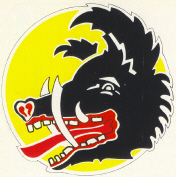 |
|
| |
|
|
| |
Part 5. |
|
| |
|
|
| |
Anti Mosquito Operations. |
|
| |
|
|
| |
As described
elsewhere Oboe equipped Mosquitos
was a particular problem for the Luftnachrichten Dienst and the Luftwaffe as such. The mere detection and tracking was for a long while a problem on it’s own, but this was solved thorough
NAXBURG. But detection and tracking is one thing, effective defence another. It flew faster and higher than most German nightfighters and the standard 88 mm Flak could not effectively engage the Mosquito at their operating altitude. The Mosquito attacks,
however, had two Achilles Heels. The track behaviour and the Oboe. The Mosquitos flew single, or in a small stream, higher and faster than any other allied aircraft. This it itself was track significant. In order to conduct an Oboe attack, the Mosquitos had to
use Oboe and navigate to a turning point about 12 min flying time from the intended target. From here the target approach was started leading up to the bomb-release point. This was a very conspicuous track. Due to their height and speed the Mosquitos would be
identified as such, up to 60 min prior to the “Oboe turning point”. |
|
| |
So for the defence of the Ruhr area a new approach was tried in August 1944. 6/JG 300 at Rheine
was equipped with a mixture of Bf 109 and Fw 190 the latter fitted with FuG 217 Neptun, and 1/NJGr 10 with Bf 109G-6 AS was deployed at Rheine and Bonn-Hangelar. |
|
| |
|
|
| |
|
|
| |
Geführte Mosquito Nachtjagd. |
|
| |
|
|
| |
For the employment of "6/JG 300" (1) a special Command and Control organization was established centred
on NJRF 4 at Twente. (Please see map and diagram below). The coastal radar sites would detect the Mosquitos over the North Sea or coming across the Channel, the Naxburg Stelle would detect and track the Oboe signals, confirm target ID, report to
KOMET, which would provide a projected flight-path; this was possible the moment the run-up point had been identified. At some point during this process 6/JG 300 would be ordered to scramble aircraft under control of either of the stations shown on the map
with the W-R range circle. The fighters would use about 30 min to reach 30.000 ft – the Mosquito operating altitude - so the early warning and decision process was crucial. The aircraft would be controlled in one of the following ways: |
|
| |
On the Jagdschloss PPI. The exact procedure is unknown and I would be grateful for additional information.
|
|
| |
On a Seeburg-Tisch with a Freya tracking the Mosquito and a Y-Linien tracking the fighter. A variant of Zahme Sau.
|
|
| |
With Freya A/N, this was a return to the very first Dunkle Nachtjagd control method.
|
|
| |
By Himmelbett-Verfahren.
|
|
| |
If the above mentioned control methods could not be accomplished the fighter would
revert to Gebietsnachtjagd with NJRF 4 providing the Reportage. This was actually Zahme Sau with single engined fighters. |
|
| |
|
|
| |
(1). 6/JG 300 is the unit mentioned in the reference document. I've been advised, that this
designation seems to be incorrect. It is, however, a fact that a number of Bf 109 and Fw 190, the latter with FuG 217, were employed on an experimental basis in the Ruhr area in the period mentioned. One possible unit could be
10.(N)/JG 300. |
|
| |
|
|
| |
|
|
| |
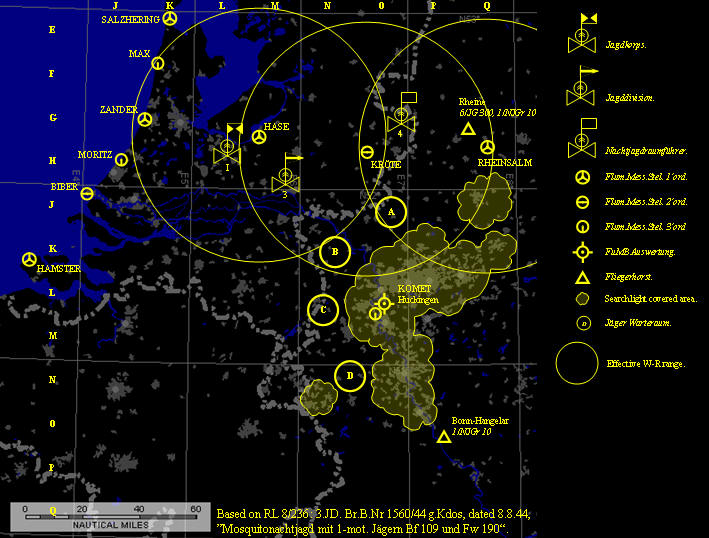
|
|
| |
The HQs and units involved in Anti-Mosquito operations. |
|
| |
|
|
| |
|
|
| |
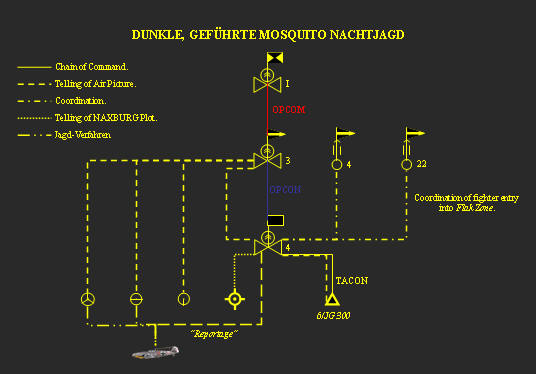 |
|
| |
The command, control and reporting organization involved in "Geführte Mosquito Nachtjagd". |
|
| |
|
|
| |
|
|
| |
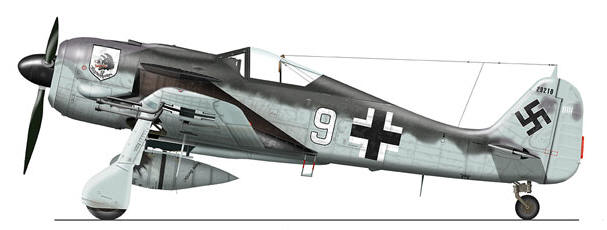 |
|
| |
A FuG 218 Neptun equipped Fw 190 A-8/R-11. The version flown by "6/JG 300" was in all
probability Fw 190 A-6/A-7 equipped with FuG 217, but the two aircraft have great similarities. Published with the very kind permission of Herr. Simon Schatz. For more beautiful artwork please see: |
|
| |
Luftwaffe Aviation Art made by Simon Schatz |
|
| |
|
|
| |
|
|
| |
Helle Mosquito Nachtjagd. |
|
| |
|
|
| |
1/NJGR 10 would capitalize on the same early warning
organization, but be scrambled directly by 3 JD to a Jäger Warteraum. Based on the Mosquito position broadcast by the Reportage the fighters would leave their waiting areas, venture into the area covered by the searchlights and hope for a
Mosquito to be illuminated. This has elsewhere been described as Helle Nachtjagd; which it was not (Please see Helle Nachtjagd) since the fighter was not radar controlled from the ground, and if
the target was being tracked by a Würzburg, it would be a Dora version belonging to the Flak. This was simply Wilde Sau. |
|
| |
|
|
| |
|
|
| |
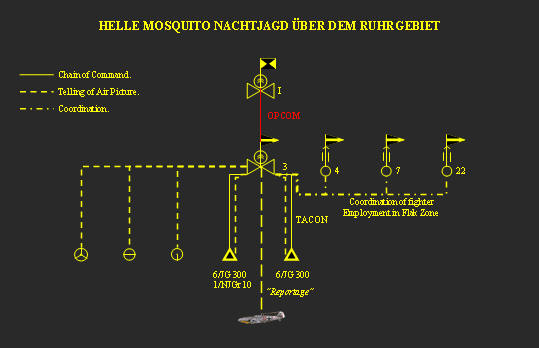 |
|
| |
The command, control and reporting organization involved in
"Helle Mosquito Nachtjagd". |
|
| |
|
|
| |
|
|
| |
|
|
| |
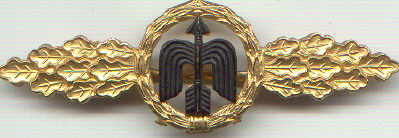 |
|
| |
|
|
| |
Back |
|
| |
|
|
| |
Home |
|
| |
|
|
| |
|
|





![]()